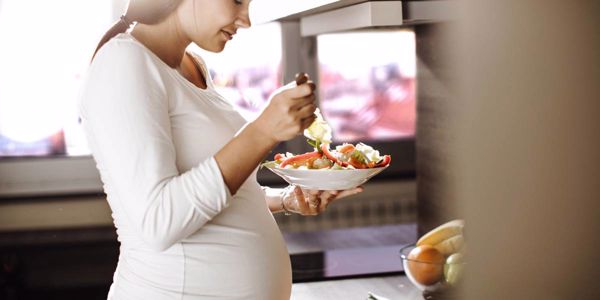Something every parent has to deal with and probably what you were least looking forward to confronting… your baby’s poo. But did you know it can be a whole spectrum of colours and consistencies? Runny, firm, dark, light, green, black, brown, and yellow. Whilst some are normal, here’s a little guide on what to look out for and what the different colours mean.
What Does a Healthy Poo Look Like?
The first few poos your baby does will be called 'meconium', a gooey, black, treacle-like poo made up of cells, amniotic fluid,and waste that built up whilst they were in utero. Whether you’re breast or bottle feeding, their first few poos will be this way.
Once this is cleared from their system, their normal poo will depend on how they’re fed. It usually goes from black to green, to yellow.
When breastfeeding, their poos will be runny and more yellow in colour, with no smell and a bit grainy - a bit like mustard.
If formula-fed, their poos will be more browny in colour, be quite smelly and have a firmer consistency.
Once your baby reaches the weaning stage at around 6-months, their poos will be firmer, darker, and smellier as their food filters through into their poo.
Poo Colours
Here are a few examples of different colour poo when it's normal and when it's not:
Green Poo (normal)
This can be quite a shock when you first see it, but normally isn’t a cause for concern. Poo is often green like pesto during the transition period following birth. If your baby is otherwise happy and isn’t showing signs of distress or discomfort, all is fine and normal.
Yellow Poo (normal)
Whether it’s bright, mustard, or neon yellow, these are all completely normal and not a cause for concern. In breastfed babies, this is how poo looks. However, if it is bright yellow and runnier than usual, this could be a sign of diarrhoea, which you may want to speak to your GP or paediatrician about to ensure your baby isn’t losing too many nutrients/fluids.
Black Poo
After the first few poos, where black poo will be their meconium and totally normal, after weaning, a black stool could mean there is blood coming from your baby's digestive system. However, it could also mean they have eaten something dark in colour, for example, blueberries. You will need to get your GP to confirm this.
Red Poo
If you see traces of red, it can indicate that there’s blood in your baby’s poo. Talk to your GP or paediatrician for their advice on what might be causing it.
Bear in mind that there can be many harmless reasons for red poo, for example, babies can swallow blood during labour, or if your little one is already eating solids, red foods like beetroot can tint your baby's poo.
White or Grey Poo
If you open your baby's nappy to find a whitish or grey coloured poo it is advisable to contact your doctor as soon as possible. Stools this colour could indicate a digestive or liver problem that should be investigated.
Orange Poo
This is often seen in breastfed babies and is totally normal. It occurs when colouring is picked up from their digestive tract.
Any Other Colours to Look Out for?
If any poo colour causes you concern or it doesn’t quite fit into the colour descriptions seen here, do get in contact with your midwife, health visitor, or GP, who can help put your mind at rest or offer advice on what could be causing it. Always better safe than sorry.
Sometimes babies even struggle to poop! We've heard that as soon as they have a little massage everyone is running for a fresh nappy! Why not sign up for our Official Midwife's First Days Baby Massage class, so you can treat your baby to a lovely tummy rub to get things moving





